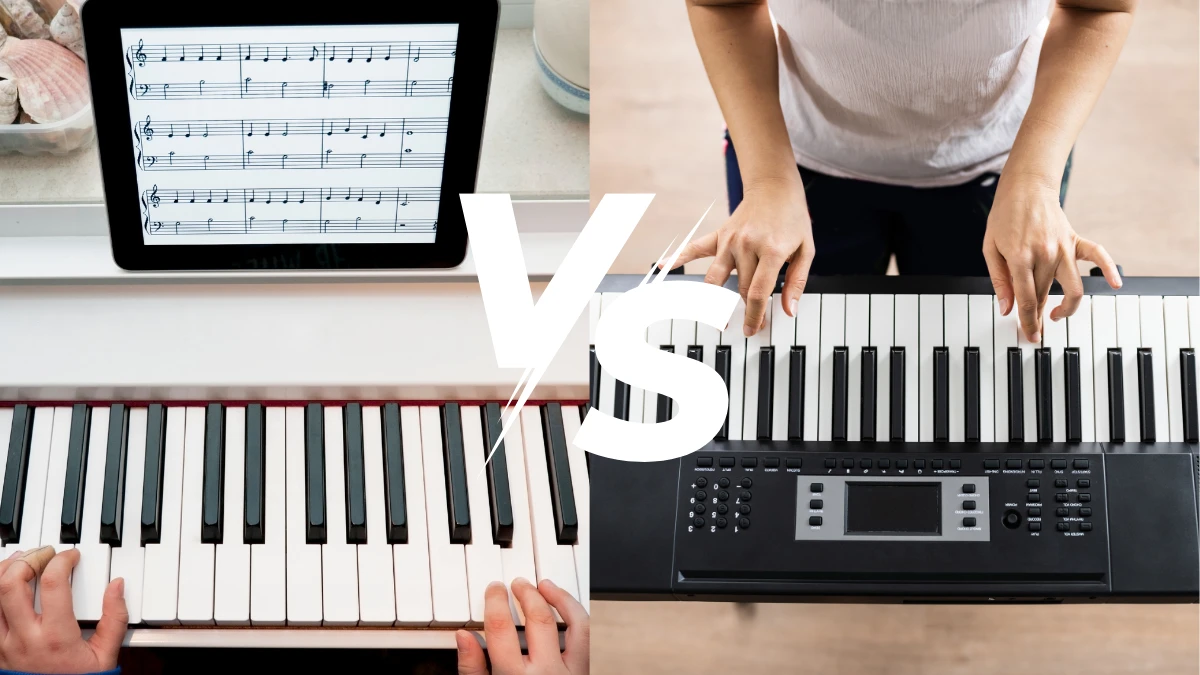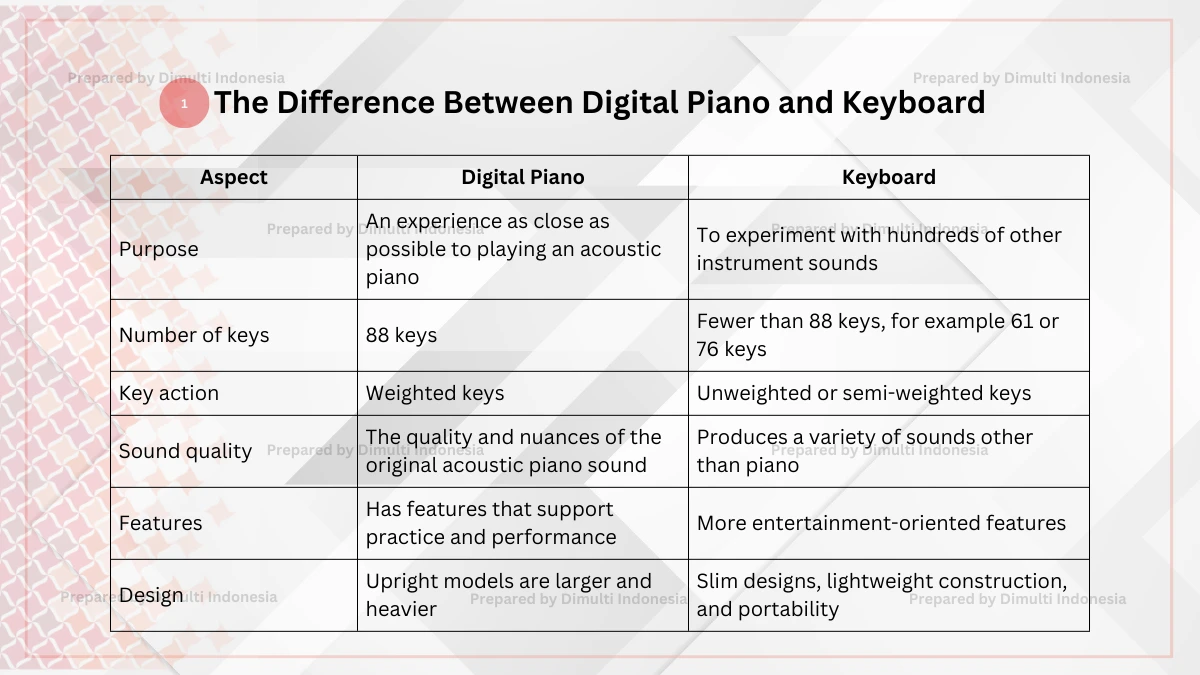Digital piano and keyboard are the keys to provide a practical alternative to acoustic pianos. Although both maximize your piano playing, the digital piano and keyboard have some significant differences.
The differences between digital piano and keyboard include purpose, number of keys, key action, sound quality, features, and design.
This article will delve into the important differences between digital piano and keyboard to maximize your piano playing.
What is a Digital Piano?

A digital piano is an electronic musical instrument designed as an alternative to acoustic pianos. The sound source of this piano is not produced from the vibration of wooden boards through steel strings struck by hammers connected to keys, but rather from sampling or sound synthesis technology stored in internal memory.
For musicians who want a highly portable device that can be easily taken anywhere, a digital piano is the right choice. With this device, you can practice without disturbing others using the headphone output. Using this piano is also made easier because it does not require routine maintenance such as tuning.
What is a Keyboard?

A keyboard is an electronic musical instrument consisting of a series of keys to produce sound, unlike an acoustic piano, which uses hammers to strike strings. This device is designed to give you the freedom to experiment. In addition to piano sounds, you will find hundreds of other instrument sounds, from guitars, drums, violins, and unique effects.
Many modern keyboard models have an auto accompaniment feature, which can automatically fill in musical accompaniment. Suitable for home entertainment or live performances with a small band format.
The Differences Between Digital Piano and Keyboard

Digital pianos and keyboards are both practical alternatives to acoustic pianos. Here are six differences between digital piano and keyboard :
1. Purpose Digital piano: Aims to provide an experience as close as possible to playing an acoustic piano, from sampled sounds, key size, key spacing, and pressure mechanism.
Keyboard: Provides the freedom to experiment with hundreds of other instrument sounds, from guitars, drums, violins, to unique effects.
2. Number of keys
Digital piano: Same as an acoustic piano, generally has 88 keys.
Keyboard: Has a more varied range of keys, usually fewer than 88 keys, for example, 61 or 76 keys.
3. Key action
Digital piano: Has weighted keys to give the feel of an acoustic piano.
Keyboard: Has unweighted or semi-weighted keys, making it lighter and easier to press.
4. Sound quality
Digital piano: Focuses solely on the quality and nuances of the original acoustic piano sound using sampling technology.
Keyboard: Produces a variety of sounds other than piano, such as organ, synthesizer, and other sounds.
5. Features
Digital piano: Has features that support practice and performance, such as a metronome, internal recorder, Bluetooth connection, and sound layering.
Keyboard: More entertainment-oriented features, including rhythm variations, large sound banks, digital effects, and even interactive screens for easy setup.
6. Design
Digital piano: Upright models are larger and heavier. However, there are also portable digital piano options that are easier to move.
Keyboard: Features slim designs, lightweight construction, and portability, making them highly portable.
That’s the difference between digital piano and keyboard that you can consider when choosing according to your personal needs.
If you want to have an experience similar to playing an acoustic piano in terms of both sound and feel, a digital piano is a good choice. However, if you want to explore many sounds and other instruments through one musical instrument, you can choose a keyboard.